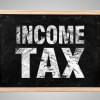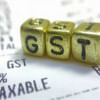How smart solutions to tax reform can help develop infrastructure
Bangladesh's public sector faces serious challenges. Poor infrastructure is one of the main factors that hold back economic growth. Government-funded health clinics struggle to provide the population with quality, specialised services. And beyond primary school, quality public education opportunities are extremely limited. These are just a handful of the challenges, and they are partly due to a stark fact: the country has one of the lowest tax-to-GDP ratios in the world.
Government tax revenue is equal to just 11 percent of the size of the entire economy. So despite the fact that Bangladesh has great potential to boost revenue earnings, much of it goes untapped.
Over the next five years, the government aims to increase this tax-to-GDP share to 14 percent. What are the best ways to accomplish this, providing the government with resources to improve public services that the people rely upon?
Bangladesh Priorities aims to answer this question, along with many others that relate to the country's development efforts. Our teams of economists have researched dozens of topics to find which solutions will do the most good for Bangladesh for each taka spent.
When it comes to strengthening the tax base, the VAT is a crucial issue, because revenues collected from it and income tax combine to account for 70 percent of all tax revenue. Bazlul H. Khondker, Professor of Economics at the University of Dhaka, and Biplob Kumar Nandi, Senior Lecturer of Economics at East West University, find that modifying the VAT and its collection is one of the most promising strategies to mobilise more resources for government.
The economists first analysed the effects of changing the way that the 15 percent VAT is calculated. Currently, the National Board of Revenue (NBR) sets tariff values for all goods and services, and these values consequently determine VAT revenues. If you are a vendor who sells soybean oil for Tk. 105 per litre, for instance, the VAT is not calculated on Tk. 105 - the actual price paid for the litre of cooking oil. Instead, the 15-percent VAT is calculated based on what the NBR decided the value of soybean should be, which is only Tk. 43.
The economists examined the effects of abolishing those tariff values and replacing them with actual market prices. Because the NBR undervalues many goods and services, the effect would be great - the change would more than double VAT revenue, adding Tk. 76.4 billion in extra tax revenue.
The second part of the strategy relates to automating the system by which the government collects the VAT. If you are that soybean-oil vendor, then you have to calculate and pay the VAT each year based on your revenues. But this process can be fraught with difficulty and is also very costly.
The research proposes streamlining this process to make it much easier to comply with tax regulations and to file returns. Instead of having to navigate paperwork, vendors would be able to use an electronic submission and return process. This would lower the costs of complying with the tax code, encouraging more compliance. The researchers estimate that the number of registered online VAT payers would increase from 35,000 to 85,000 - fully 50,000 more companies would voluntarily pay their taxes.
Automating the system would raise tax revenue by Tk. 24.2 billion. And vendors would also benefit, because they save money on expensive auditors and other accounting services needed to comply with the currently convoluted tax code.
The two-part solution - abolishing the tariff-setting process and automating VAT collection - would raise the nation's tax-to-GDP ratio by nearly 1 percentage point. That's still short of the government's five-year goal of 14 percent, but its progress is equivalent to Tk. 100.4 billion of additional tax revenues per year.
The true benefits of mobilising more government resources, however, would depend entirely upon what the extra tax revenue accomplishes. If the money is not spent wisely, then the efforts to raise revenues could be for naught. But wise spending can yield great results.
Our analysis assumes that the additional funds are most likely to be spent on infrastructure projects that Bangladesh greatly needs - road and rail transportation, the electrical grid, and water supply systems. But implementing the tax reforms will cost money. And while raising revenue may benefit the government, it raises prices for consumers, so it has to be counted as a cost for citizens.
It turns out, however, that when you calculate the net effects of the tax reforms, plus the benefits from infrastructure spending, the strategy has respectable results - every taka spent toward making the VAT system more efficient and effective in this way would do almost do Tk. 6 of good, assuming the revenues are spent on infrastructure projects.
Mobilising more resources for government could help improve many public services and goods, including the massive infrastructure needs of the country. But is mobilising more government resources the best way to help Bangladesh? And how could the government best use extra revenue that it does raise? Let us hear from you at https://copenhagen.fbapp.io/financepriorities. We want to continue the conversation about how Bangladesh can do the most good, and which solutions she should prioritise for her future.
The writer is president of the Copenhagen Consensus Center, ranking the smartest solutions to the world's biggest problems by cost-benefit. He was ranked one of the world's 100 most influential people by Time magazine.

 For all latest news, follow The Daily Star's Google News channel.
For all latest news, follow The Daily Star's Google News channel. 







Comments